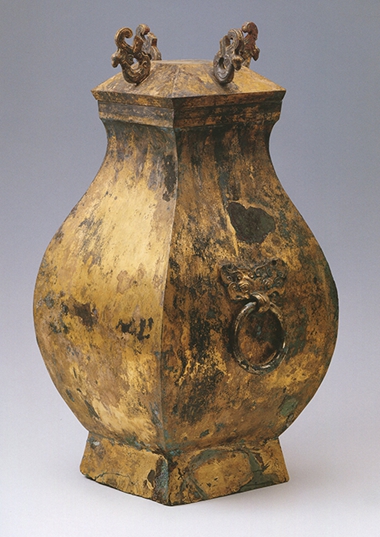

Xuzhou Han Culture Academic
Submit
【XU BO】Maximum daily capacity: 10,000 person-times Instantaneous capacity: 2,500 person-times
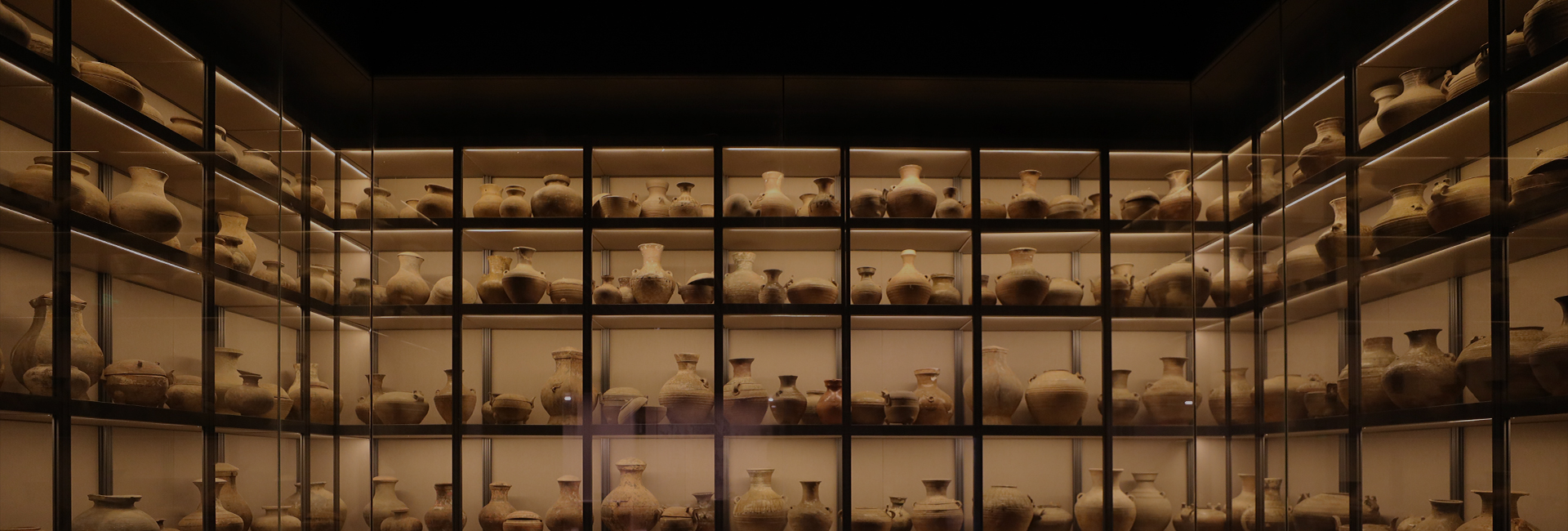
◇ Exhibition time:From 2017-05-25 To 2017-11-12
◇ Exhibition venue:China Institute Gallery
Preface
Xuzhou, known as Pengcheng in the ancient times, has always been a battleground for soldiers. It was not only the place of the peasant uprising in the late Qin Dynasty, but also the hometown of Liu Bang, the founding emperor of the Han Dynasty. In the early years of the Western Han Dynasty, Liu Bang sealed the princely kings in order to consolidate his rule. In 201 BC, Liu demoted Han Xin as Huaiyinhou for the reason of rebellion, and sealed Peng Cheng to his younger brother Liu Jiao. Peng Cheng thus became the residence of the Kings and nobles of Chu, going through more than 190 years. Under the Han system, the princely king died and was buried in the state. There are twelve generations of Chu kings in Xuzhou. Sixteen tombs of Chu kings or queens have been found.

in the nearly two hundred years of the Kingdom of Chu, the Kings were born and buried. Archaeological excavations in recent decades have shown the incredible underground world and complex tombs. The structure and various items unearthed, especially complete jade suits, exquisite jade wares and pottery figurines, show people the dreams for eternal life.
The Han Dynasty was the first prosperous and lasting unification feudal dynasty in Chinese history. As an important feudal state, Xuzhou's unearthed cultural relics demonstrated the national strength and independence of the Han Dynasty vassals. This exhibition will introduce these relics to explore the view of life and death in the Han Dynasty. From the time of the elaborate funeral style, it reflects the people's desire for the eternal life.
Unit 1 King's Guardian
Judging from the 11 tombs of Chu in the Western Han Dynasty and a large number of Han tombs, terracotta warriors and horses buried there with the Kings. They are mostly unearthed in funerary pits outside the tomb, on the sides of the tomb or in the niches, including terracotta warriors and figurines. The most spectacular one is the terracotta warriors pit of Shizishan Tomb, about 400 meters west of the Chu Mausoleum. Although damaged due to the soil collection in early years, there are at least 5 pits there. The pottery figurines of the Han Dynasty were mostly gray pottery, molded in the kiln. Add white ceramics after firing, and then paint. They are vivid shown in their eyebrows, clothing patterns, and different equipment.
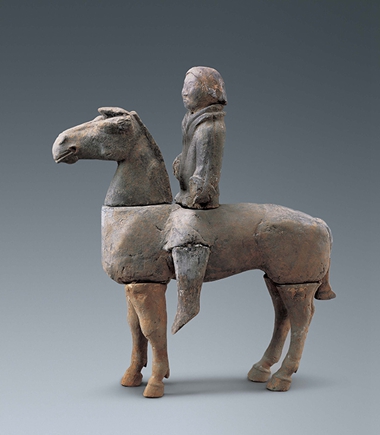
Figurines are an important part of ancient Chinese burial objects, which originated from the funeral concept of the ancients who regarded death as life. In order for the deceased to continue to live as he did in the underworld, the figurines are truly loaded with all kinds of information from ancient societies, and are of great significance to the study of ancient public service systems, military arrangements, lifestyles, and even cultural exchanges between China and the West.
During the period of the great development of sculpture art in Chinese history in the Han Dynasty, the types, quantities, materials, and levels of figurines reached a new height. The level of modeling and production has been perfected, the style is simple and vigorous, the charm is vivid, and the meaning is in shape. Xuzhou is the hometown of Han ancestor Liu Bang. There were twelve generations of Chu kings in the Western Han Dynasty, and six Chu kings or Peng Cheng kings in the Eastern Han Dynasty. After they died, they were buried near Xuzhou, thus forming the huge Han tomb group. A large number of funeral clay figurines were unearthed.
Unit 2 Eternal Dream
The strong consciousness of life and death and seeking immortality in the Han Dynasty formed a elaborate burial style for creating the afterlife and pursuing eternal life. In addition to creating luxurious underground palaces, burying various items and pottery figurines, it is extremely important to form a complete funeral jade combination such as a jade coffin, jade suit, jade mask, jade pillow and jade grip. The Western Han Dynasty funerary jade unearthed in Xuzhou is particularly exquisite and distinctive. Jade suit is the ultimate pursuit of jade funeral. This jade burial custom started from the jade mask in the Western Zhou Dynasty (about 1100 BC to 771 BC) and gradually perfected in the Han Dynasty. The Han dynasty believed that wearing jade suits and plugging nine apertures with jade would immortalize the body and live forever in the next life. This part of the exhibit shows the most exquisite set of jade suit, seal mud and other objects in archaeological excavations to provide a basis for understanding the identity and funeral customs of the King of Chu. In addition, the pottery figurines of the servants and dancers revealed the unique dance music in the Chu palace, showing that the kings of Chu loved beautiful jade and accompanied by music and dance and expecting the eternal life.
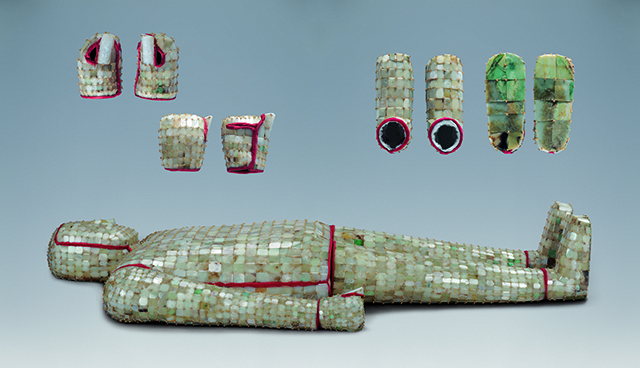
Unit 3 Longing for jade
Stone is the bone of the earth, beautiful stone is the jade, jade is the essence of the heaven and earth, and it is considered to have extraordinary power. So Chinese saying goes : "Jade nurtures people, people nurtures jade", wearing and playing with jade all year round could cultivate humans. The worship of jade has been used to sacrifice heaven and earth, decorate noble, and bury in funeral tombs since the Neolithic Age in China. Xuzhou Han jade is mainly unearthed from the tombs of King Chu and many nobles. It is characterized by a complete category, a large number, good jade quality, and exquisite craftsmanship, which represents the highest level of Han Dynasty. In particular, funeral jade ware is very distinctive, as described in the previous exhibition hall. This section will continue to introduce the Western Han Dynasty jade unearthed in Xuzhou.
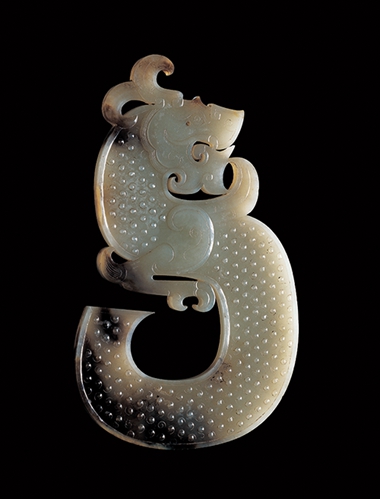
Unit 4 Soul immortality
The end of life is the beginning of entering another world. In ancient China, the concept of life and death evolved to build another world for the dead, so that they still enjoyed everything they had and loved. In the ancient Shang and Zhou dynasties, not only the owners were buried in the tombs, but even a large number of people and horses were buried with them. In the Spring and Autumn Period, pottery figurines were used to replace living people, but there was still the custom of burying the loved things during their lifetime. Some items are even marked with the owner's name to clarify the ownership to avoid disputes in another world. The exhibits displayed in this section are all practical utensils buried with the tomb owner. According to the custom, bathing supplies are buried. For example, the gold plate (Zhao Jimu Pan, exhibit No. 70) given by the Han Dynasty Royal Palace in the exhibits should be the love of the tomb's owner. Or the whole burial is filled with wine utensils, such as the bronze cymbals (exhibition 73) and gilt bronze urn (exhibition 74) unearthed from the Shizishan Tomb, etc. The beloved things are buried with them to show the concepts of "Soul immortality" and expecting eternal life.
